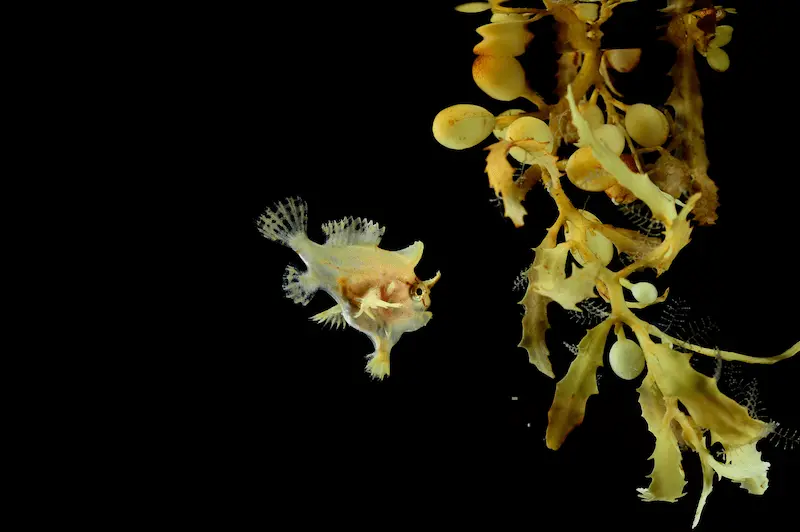Biodiversity and genetic diversity both within species and between species is critical for maintaining the health, productivity and resilience of an ecosystem. Marine biodiversity, in particular, has the potential to transform medicine, industry, environmental remediation and energy production. However, marine biodiversity is simultaneously under-sampled and threatened by pollution, habitat destruction, fishing and climate change.

Sargassum
Using shipboard measurements of seawater pH and alkalinity (buffering capacity), SEA students establish baseline conditions of ocean chemistry and assess changes over time.SEA has been at the forefront of identifying and describing the taxonomic differences between these Sargassum types using extensive field samples as well as morphological and genetic tools. This research is particularly relevant given the rise of a previously-rare form of Sargassum inundating Caribbean beaches and wreaking havoc on local ecosystems and economies. Understanding the taxonomy and molecular diversity of these seaweed variants will shed light on the shifting patterns of Sargassum distribution and abundance throughout the region.

Genetics
Genome scale research can enhance our understanding of marine ecosystems. New, groundbreaking molecular tools are more efficient and portable than ever before, allowing us to look at biodiversity on the high seas using genomic tools directly on board SEA’s vessels. Whether it’s leveraging barcoding tools to analyze entire zooplankton assemblages or whole genome sequencing of mesopelagic fishes, students in SEA programs learn cutting edge techniques from the ship lab bench to analysis. SEA programs have been part of the Oxford Nanopore Technologies Education Beta Program from it’s inception and sequences generated on the portable minION platforms are part of SEA’s long-term research data sets in both the Pacific and Atlantic.